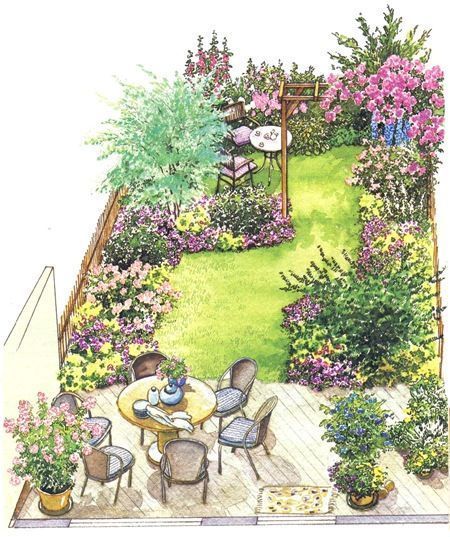
Small gardens can still pack a punch when it comes to design and functionality. With a little creativity and planning, even the tiniest of outdoor spaces can be transformed into a beautiful and inviting oasis. Here are some tips and ideas for designing a small garden layout that maximizes space and creates a stunning outdoor retreat.
One of the most important things to consider when designing a small garden layout is how to make the most of the available space. To create a sense of depth and maximize square footage, consider using vertical elements such as trellises, hanging plants, or wall-mounted planters. These features not only add visual interest to the space but also free up valuable floor space for other elements such as seating or pathways.
When it comes to choosing plants for a small garden, opt for varieties that are compact, low-maintenance, and suited to the climate and sunlight conditions of your space. Consider incorporating a mix of evergreen plants for year-round interest, as well as seasonal flowers and herbs for color and fragrance.
To create a sense of cohesion and harmony in a small garden layout, think about using a consistent color scheme or theme throughout the space. This could be achieved through the use of coordinating plant containers, decorative accents, or a specific plant palette. Keeping the design simple and cohesive will help to visually expand the space and create a sense of unity.
Another key aspect of designing a small garden layout is creating functional zones that cater to different activities and usage patterns. For example, you could allocate a corner of the garden for a small seating area with a bistro table and chairs, or create a dedicated space for a herb garden or vegetable patch. By dividing the garden into distinct zones, you can make the most of every inch of space and create a versatile outdoor living area.
In terms of hardscaping elements, consider using materials that are visually light and airy, such as gravel, pebbles, or paving stones. These materials can help to create a sense of openness and flow in a small garden layout, while also providing a practical and low-maintenance surface for walking and seating areas.
Overall, designing a small garden layout requires careful planning, creativity, and a thoughtful approach to space utilization. By considering vertical elements, plant selection, color schemes, functional zones, and hardscaping materials, you can create a stunning and inviting outdoor retreat that maximizes the potential of your small garden. With a little effort and creativity, you can transform even the tiniest of spaces into a beautiful and functional garden oasis.
 Garden Ideas
Garden Ideas







